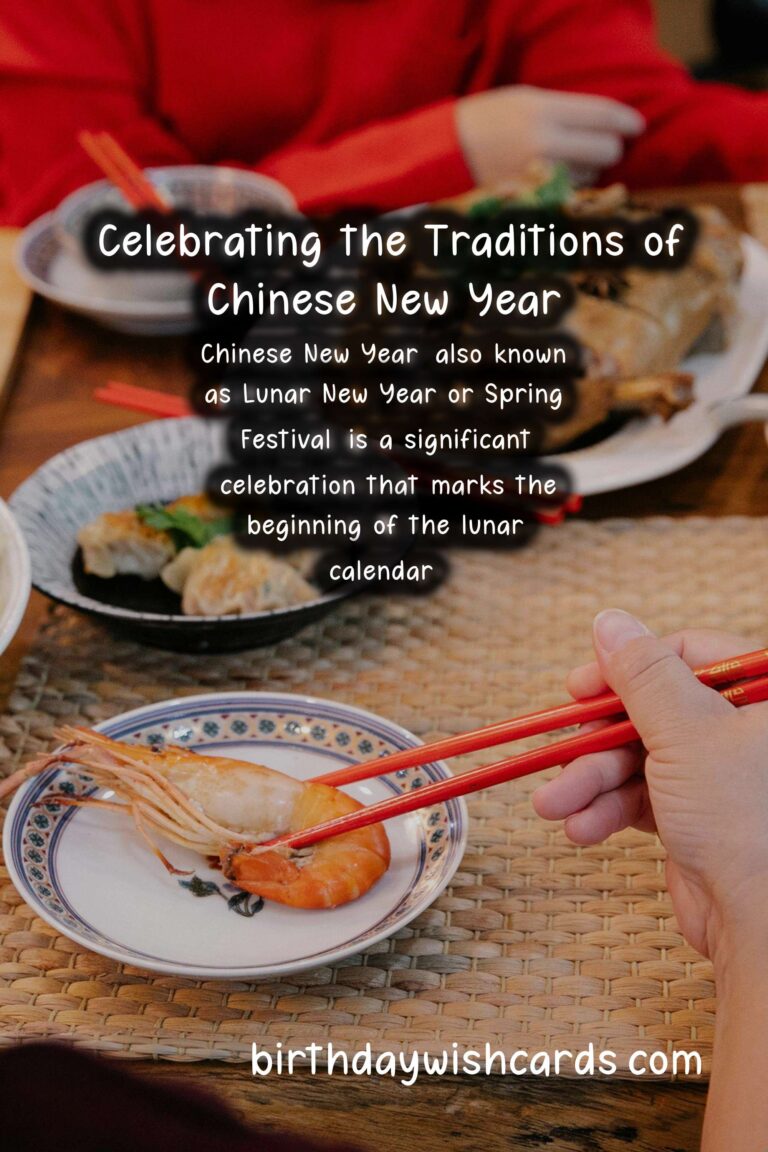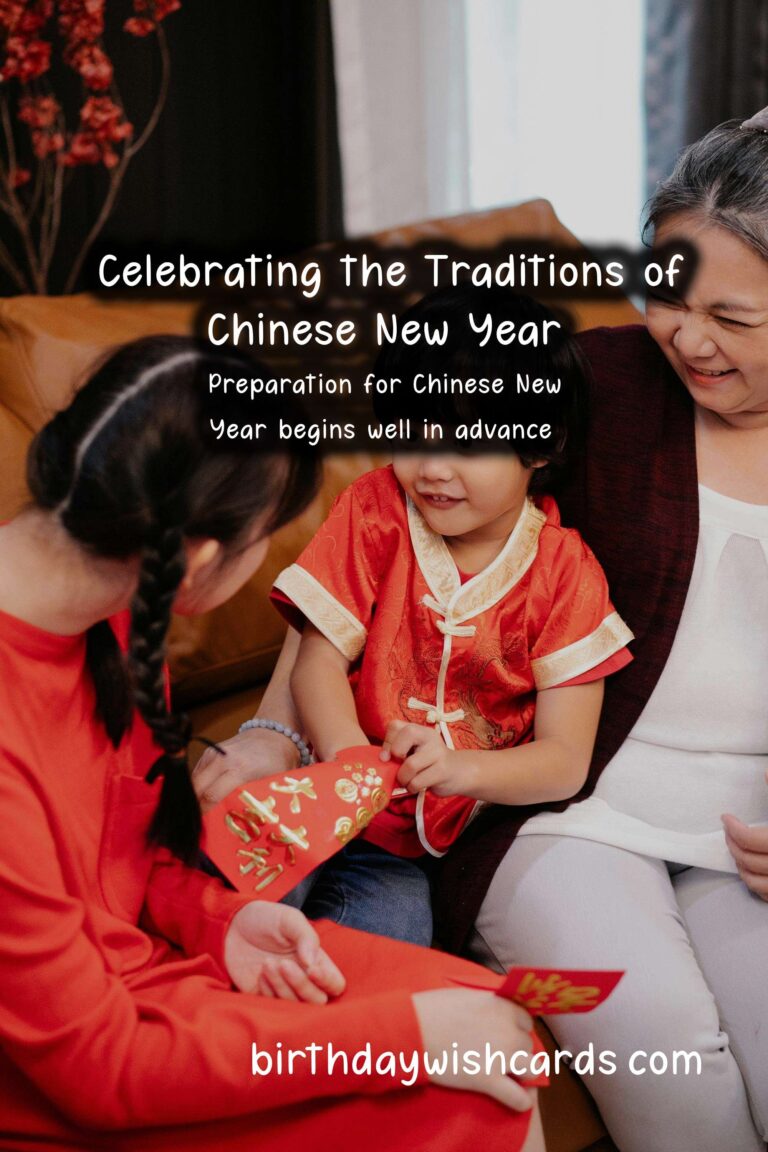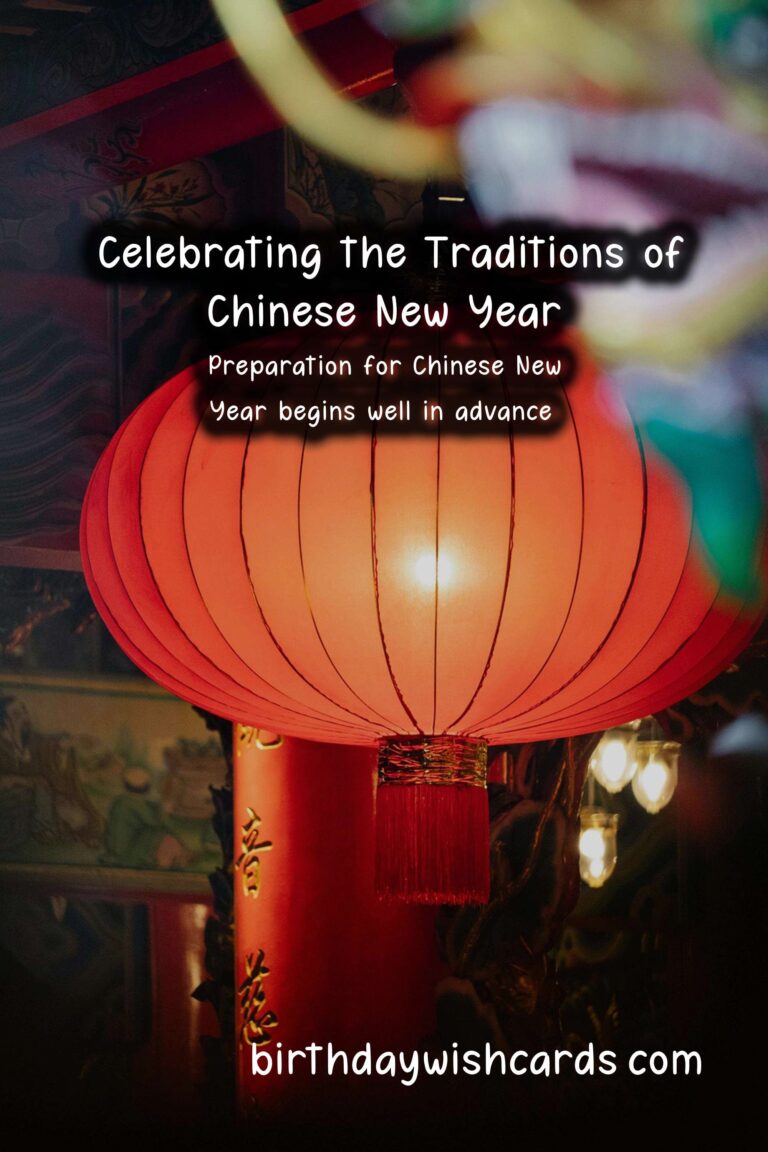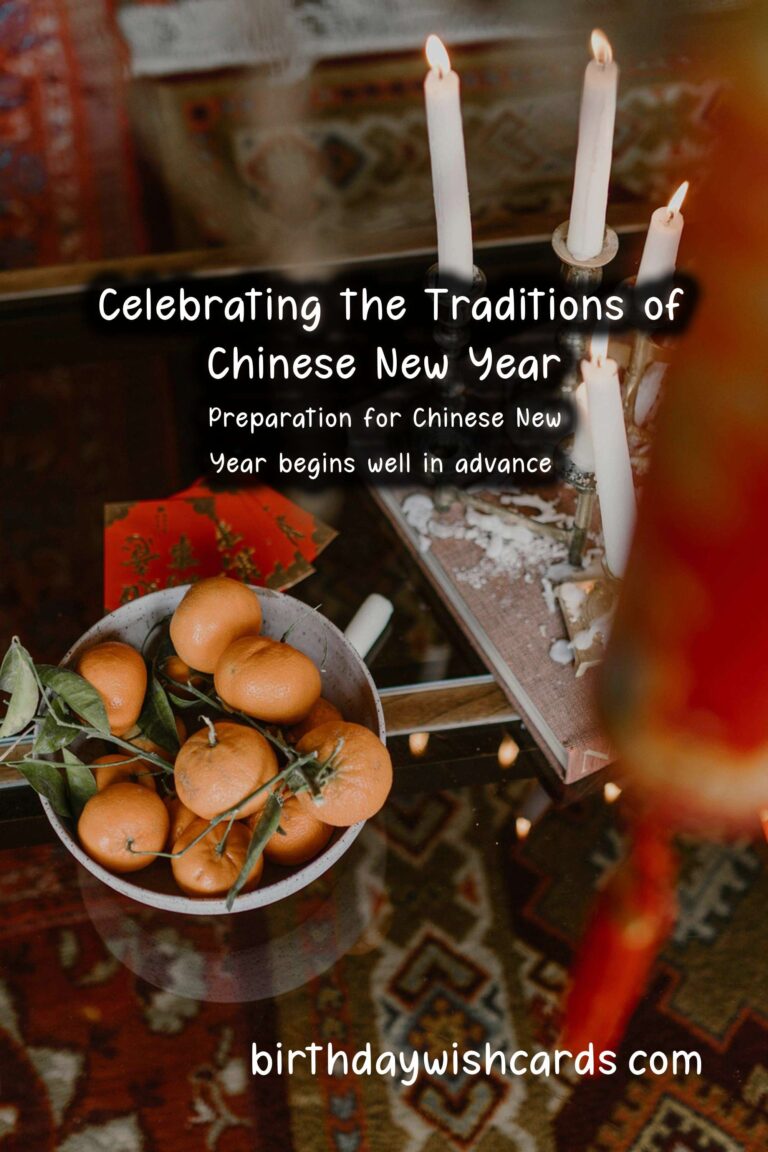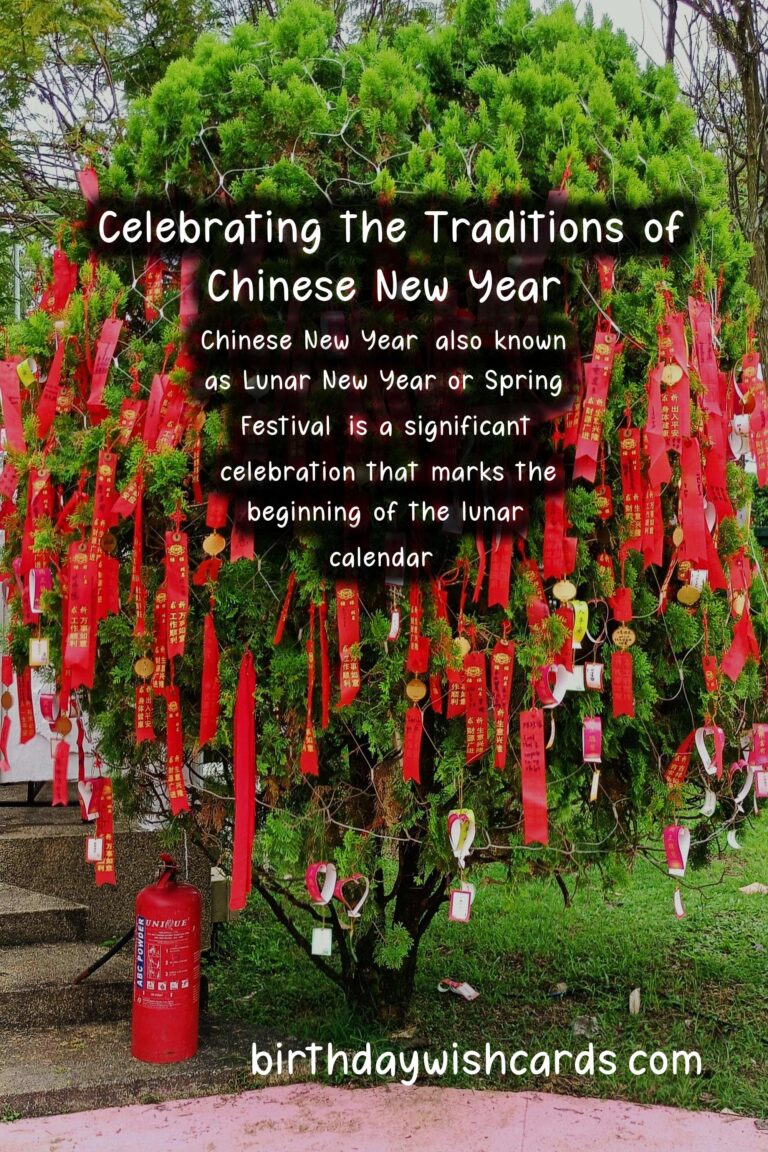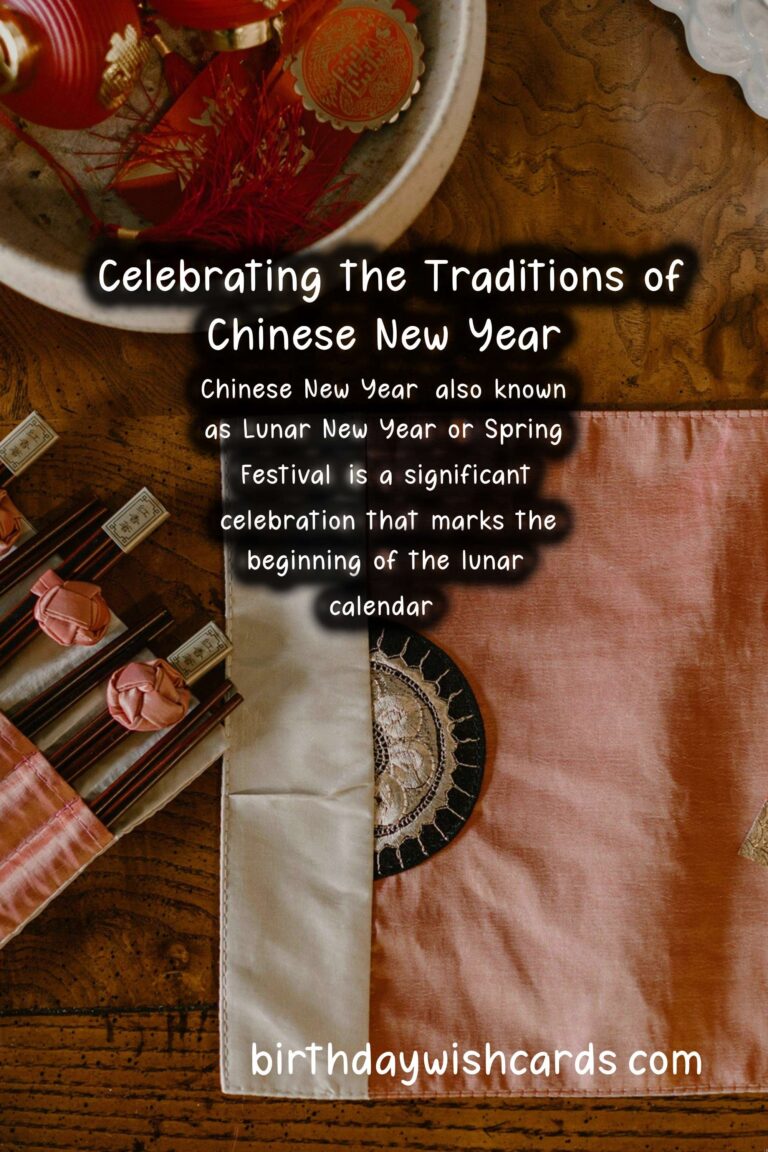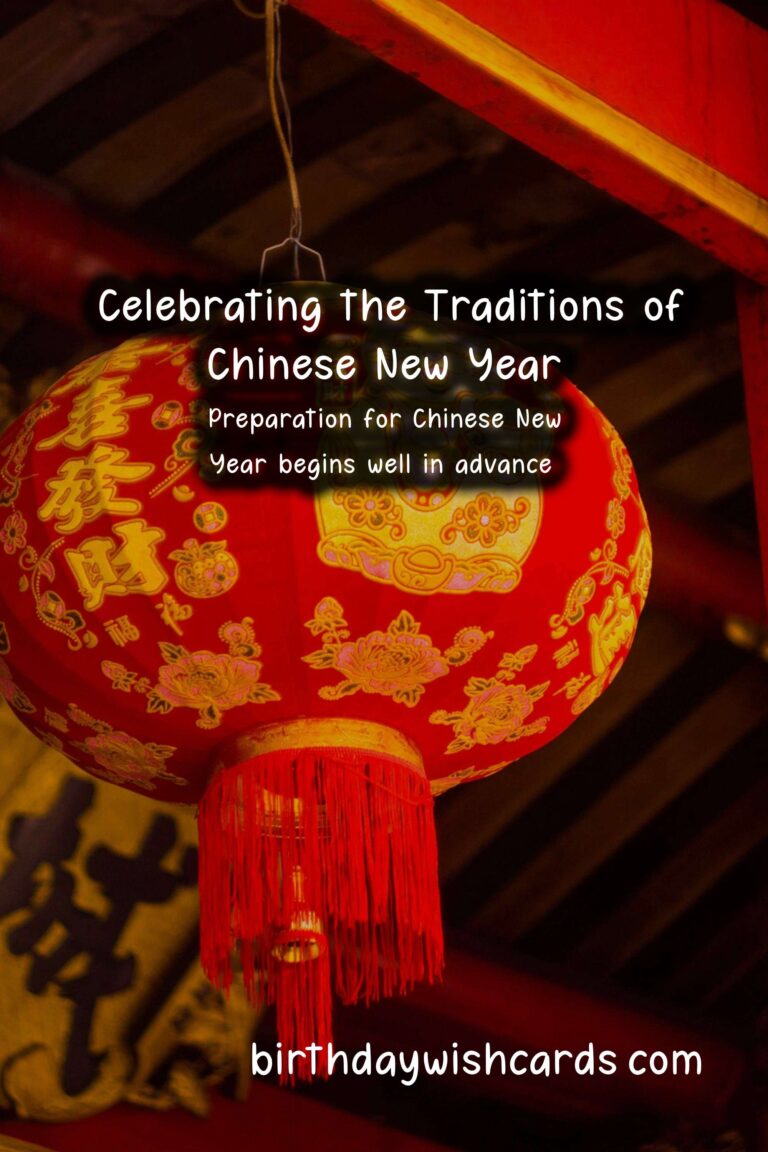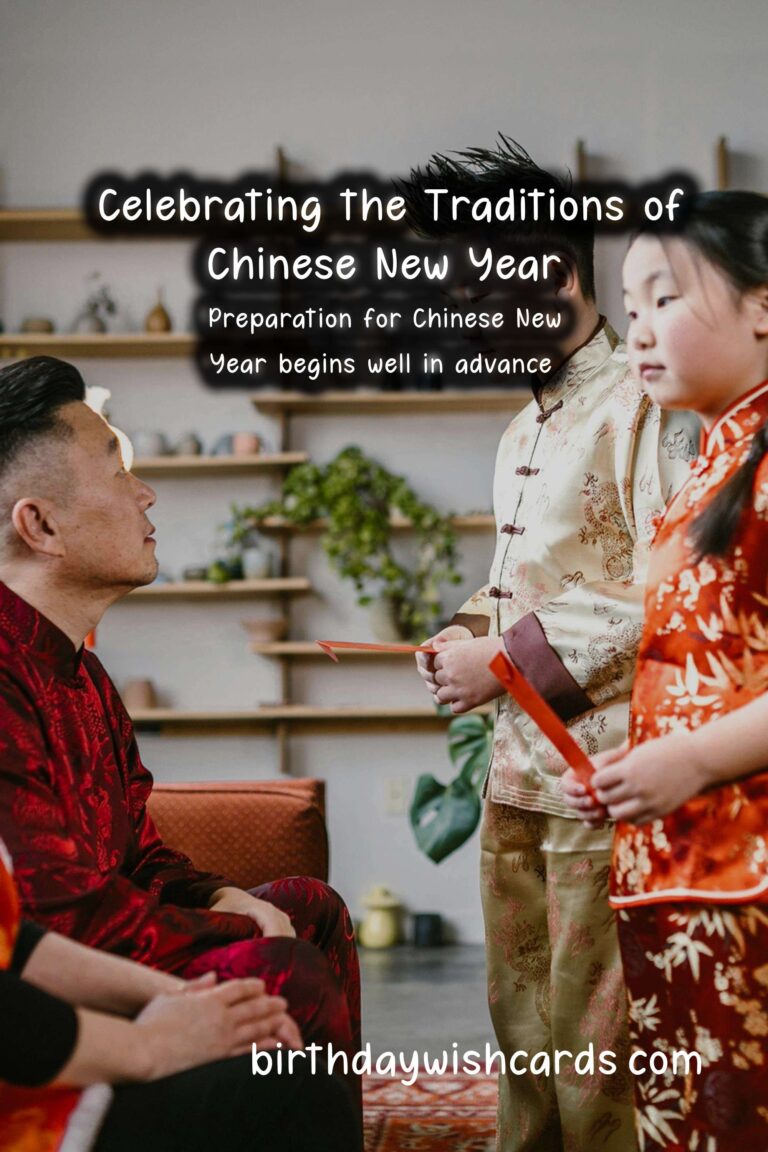
Chinese New Year, also known as Lunar New Year or Spring Festival, is a significant celebration that marks the beginning of the lunar calendar. This festival is steeped in rich traditions and rituals that vary across different regions and families within China. In this article, we will explore the various customs, beliefs, and practices that characterize this vibrant festival.
Understanding the Significance of Chinese New Year
The Chinese New Year is not just a time for festivities; it holds deep cultural significance. Traditionally, it symbolizes the start of a new year, a time to bring in good fortune and to ward off bad luck. Families gather to celebrate the unity of their loved ones and to honor their ancestral heritage.
The Preparations Leading Up to the Celebration
Preparation for Chinese New Year begins well in advance. Families clean their homes to sweep away any bad luck accumulated in the past year. This act of cleaning is known as “sweeping of the grounds” and is believed to welcome good fortune into the home. Many also hang red decorations and lanterns, which symbolize happiness and good luck.
Traditional Food: A Culinary Celebration
Food plays a crucial role during Chinese New Year celebrations. Each dish served carries its own meaning and contributes to the hopes for the coming year. Popular dishes include:
- Dumplings: Symbolizing wealth and prosperity.
- Fish: Representing surplus and prosperity, often served whole.
- Noodles: Signifying long life and longevity.
- Rice Cake: Implying stability and progress.
Families often prepare feasts to welcome relatives, and it’s customary to leave some food uneaten as a symbol of abundance.
The Role of Red Envelopes
A popular tradition among families is the giving of red envelopes, known as “hongbao.” These envelopes contain money and are given to children and unmarried individuals to symbolize good luck, prosperity, and blessings for the new year.
Festivities and Celebrations
The actual celebration usually lasts for about 15 days, with each day filled with various customs and activities. Some of the highlights include:
Reunion Dinner
The reunion dinner is one of the most important events during the Chinese New Year. Families gather for an extravagant meal on New Year’s Eve to celebrate togetherness. It is a time for family bonding, sharing stories, and passing on traditions.
Fireworks and Lion Dances
Fireworks play a pivotal role in Chinese New Year celebrations, believed to scare away evil spirits and bring good luck. Lion dances are also performed, showcasing colorful costumes and acrobatics, symbolizing strength and good fortune.
Visiting Family and Friends
During the festivities, it’s common to visit family and friends to exchange greetings and good wishes for the new year. Homes are usually filled with laughter and joy as loved ones come together.
The Lantern Festival
The Chinese New Year celebrations conclude with the Lantern Festival, which falls on the 15th day of the lunar month. During this time, beautiful lanterns are displayed, and people often partake in festivities such as solving riddles attached to the lanterns and enjoying sweet glutinous rice balls, symbolizing reunion.
Conclusion
Chinese New Year is a time to reflect on the past, celebrate the present, and look forward to a prosperous future. The various rituals and traditions not only highlight the rich cultural heritage but also serve to strengthen family ties and bring hope and joy. Understanding these customs allows us to appreciate the significance of this extraordinary festival and its impact on millions of people around the world.
Chinese New Year, also known as Lunar New Year or Spring Festival, is a significant celebration that marks the beginning of the lunar calendar. Preparation for Chinese New Year begins well in advance. 
